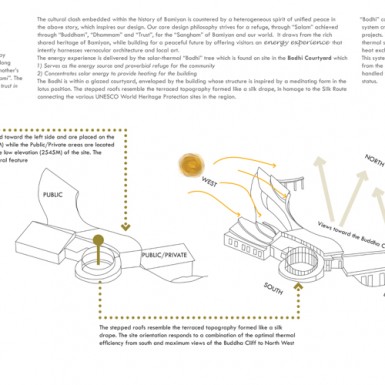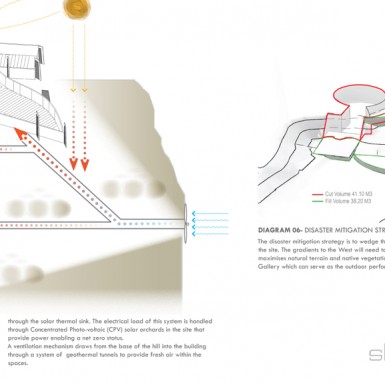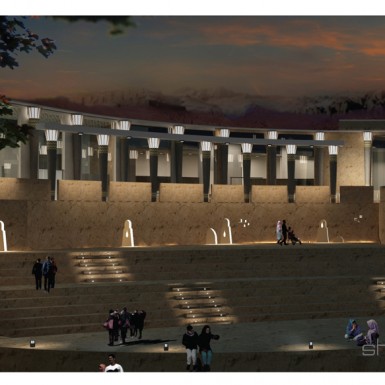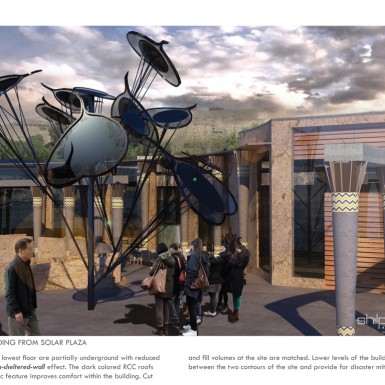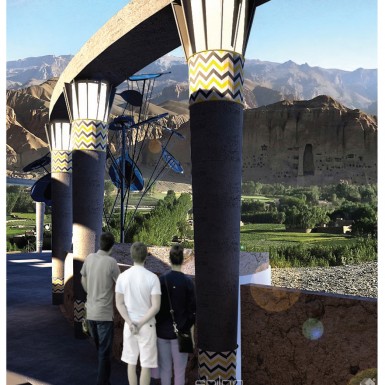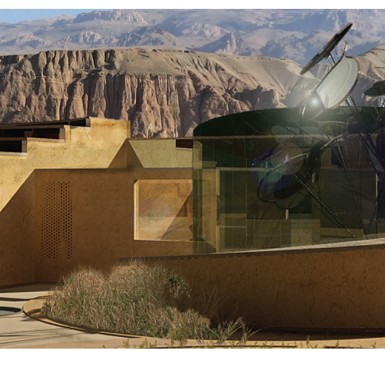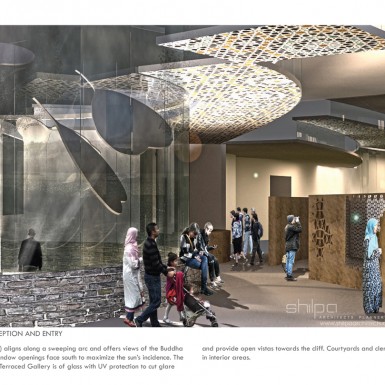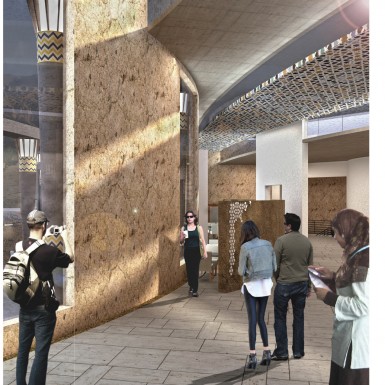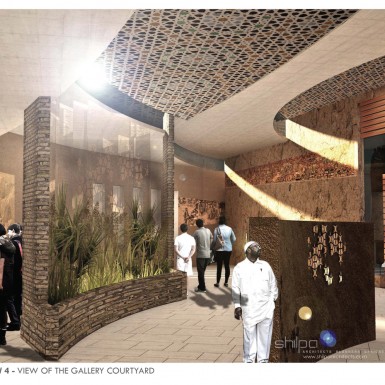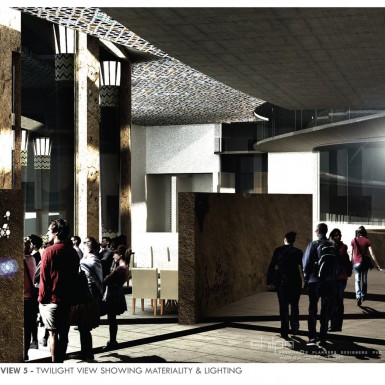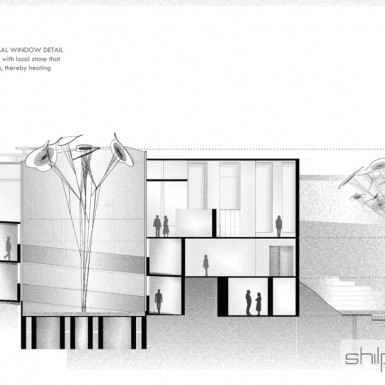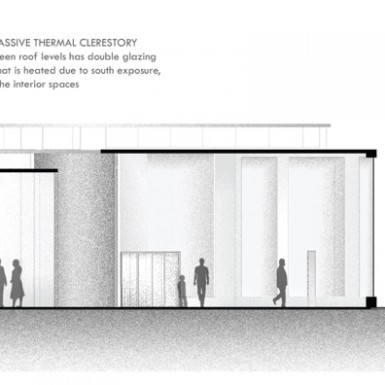Bamiyan Cultural Centre, Afghanistan
Design Competition entry by Shilpa Architects.
Chief Architect: Sheila Sri Prakash
Chief Designer: Pavitra Sri Prakash
The cultural clash embedded within the history of Bamiyan is countered by a heterogeneous spirit of unified peace, which inspires our design. Our core design philosophy strives for a refuge, through “Salam” achieved through “Buddham”, “Dhammam” and “Trust”, for the “Sangham” of Bamiyan and our world. It draws from the rich shared heritage of Bamiyan, while building for a peaceful future by offering visitors an energy experience that intently harnesses vernacular architecture and local art.
The energy experience is delivered by the solar-thermal “Bodhi” tree which is found on site in the Bodhi Courtyard which
1) Serves as the energy source and proverbial refuge for the community
2) Concentrates solar energy to provide heating for the building
The Bodhi is within a glazed courtyard, enveloped by the building whose structure is inspired by a meditating form in the lotus position. The stepped roofs resemble the terraced topography formed like a silk drape, in homage to the Silk Route connecting the various UNESCO World Heritage Protection sites in the region.
“Bodhi” connects cosmic energy from the sun and transmits heat which is stored in a thermal sink. The closed loop heating system creates a low-cost, low-tech, off-grid solution designed and proven in South Asia, in our LEED-NC Platinum rated projects. The installation of light concentrated by mirrored accumulators entrap the sun’s energy and transfer heat to a thermal sink containing suitable phase change material such as rock salt. This material is contained underground with a heat exchanger that imparts energy to a closed circuit of water-antifreeze flowing through radiant pipes in the floors. This system transports the fluid after it returns from the building, to a network of geothermal reservoirs, to gather heat from the bedrock before it returns to be recycled through the solar thermal sink. The electrical load of this system is handled through Concentrated Photo-voltaic (CPV) solar orchards in the site that provide power enabling a net zero status.



